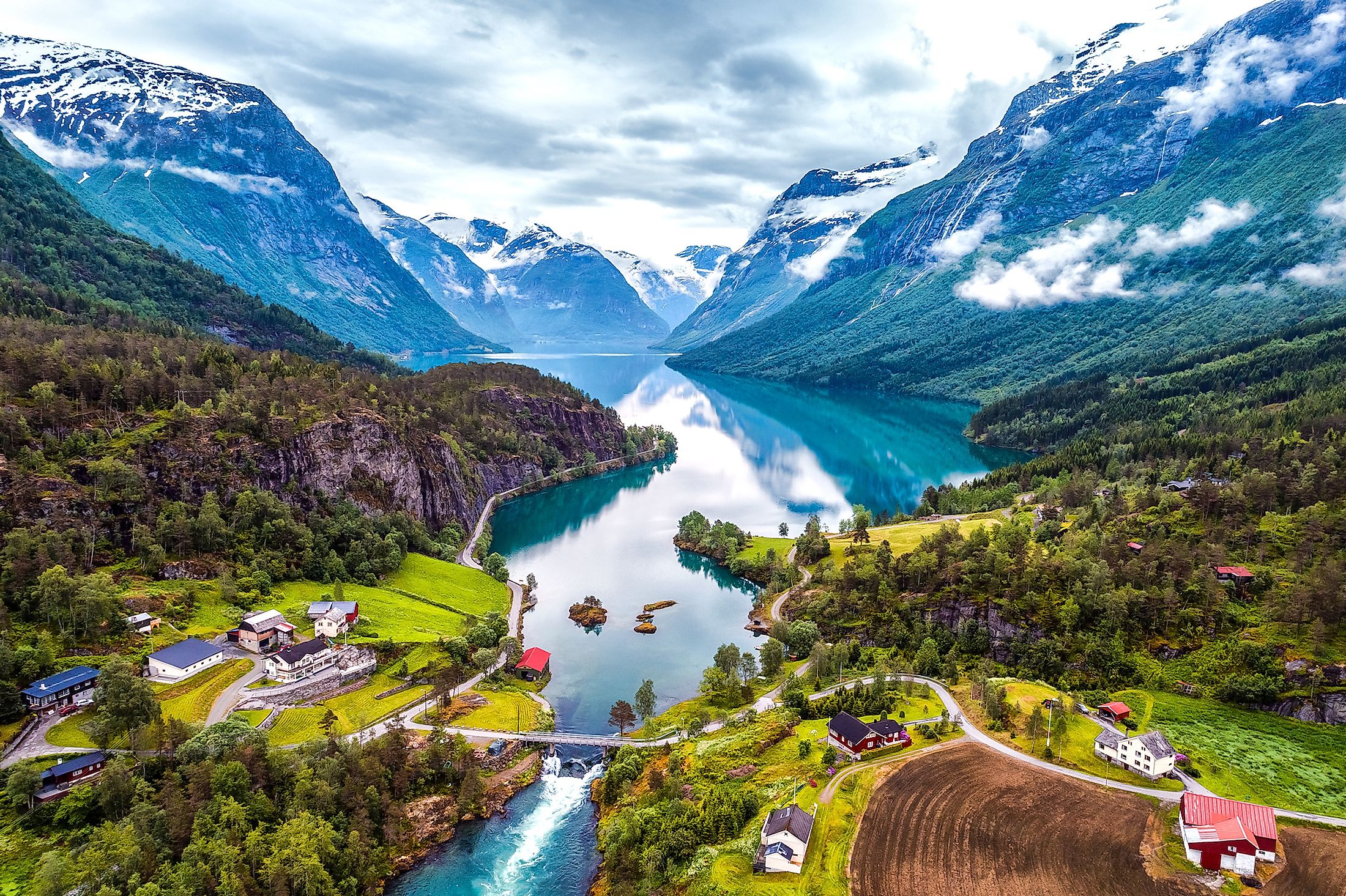
Fjords
Also spelled fiord, fjords are elongated, deep, narrow steep-sided inlets of the sea that extends far inland and are formed due to the inundation of a glaciated valley. The Norwegian word “fjord” has been derived from the Old Nordic word fjǫrðr, which means “a lake-like water body used for passage and ferrying.” Fjords are observed on the coasts of Norway, Denmark, Canada, the United States, Greenland, New Zealand, Russia, Antarctica, and the United Kingdom.
Geography Of Fjords
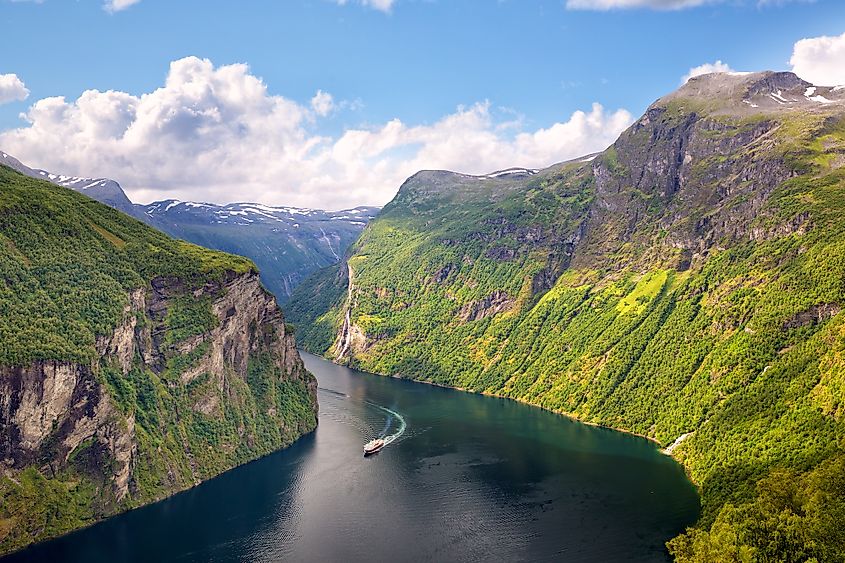
Fjords are set in a U-shaped valley surrounded by steep rock walls on three sides, while the fourth side, which is open to the sea, is referred to as the mouth of the fjord. Fjords receive saline water from the sea or oceans, while the upstream rivers, glacial meltwater, and rainfall drain freshwater into them. Fjords can reach extreme depths due to their steep sides, and many fjords are astoundingly deep, like Norway’s Sognefjord, which reaches a depth of 4,290 ft, while Chile’s Canal Messier reaches a depth of 4,167 ft. Extending thousands of feet below sea level, the depths of these inundated valleys are attributed to their glacial origin. The most distinctive feature of fjords is that it is comparatively much longer than its width. Their long, narrow nature proves that fjords extend far inland from the coast. However, it must be noted that if the inlet is much broader than its length, it is considered a bay and not a fjord.
Distribution And Classification Of Fjords
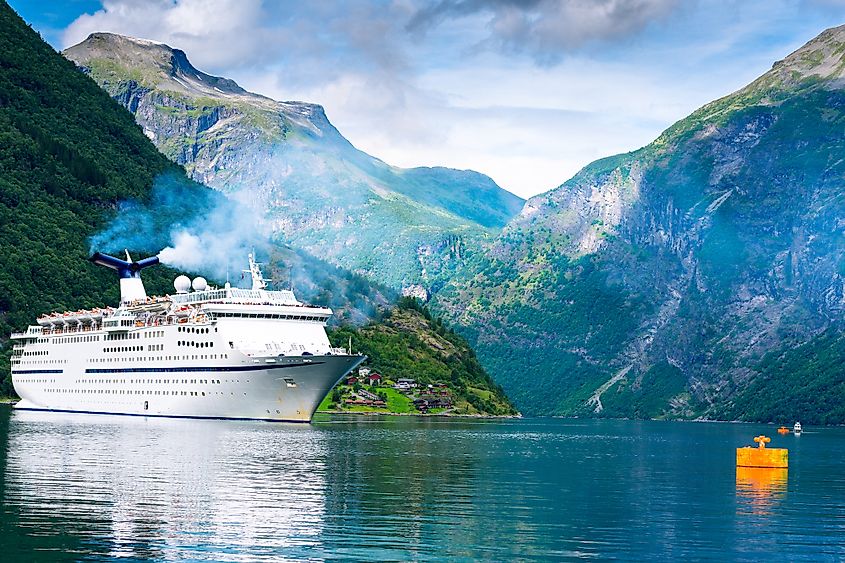
In both the Northern and Southern Hemispheres, fjords are observed in those mountainous regions that are in the higher middle latitudes and high latitudes, reaching about 80°N. Most of the fjords are found in the Northern Hemisphere, i.e., the half of the planet most significantly covered by glaciers during the previous Ice Ages and where many valley glaciers plummeted to the lower sea levels. The principal fjords are observed along the western coast of Norway, the west coast of North America extending from Puget Sound to Alaska, the western and southwestern coasts of South America, and the southwest coast of New Zealand. In addition, fjords have also been observed in Canada’s British Columbia, Quebec, Nunavut, Newfoundland and Labrador; Russia’s Kamchatka and Novaya Zemlya; the Faroe Islands in Denmark; Antarctica; Greenland, Kerguelen Islands; Scotland; Tasmania; and the South Georgia Island.
Fjords can be classified into different types based on various parameters like climate regimes, glacier regimes, and other environmental factors that influence the fjord setting. According to climate regimes, fjords can be of different types, like polar, subpolar, and temperate. Polar fjords are found in the eastern and northern parts of Greenland, the Canadian Arctic, and parts of Antarctica. These fjords are almost permanently covered with sea ice or an ice shelf and possess a resident glacier. Sediment supply to these fjords occurs from the glacier bed, icebergs, and glacial rivers. Subpolar fjords are found in the western part of Greenland, Svalbard, the Canadian Arctic, and on the Antarctic Peninsula. The primary sediment sources for these subpolar fjords include terrestrial rivers, subglacial meltwater runoff, icebergs, and subglacially derived materials. Non-glaciated temperate fjords are observed in Alaska, Norway, Iceland, Scotland, Chile, and New Zealand.
Formation Of Fjords
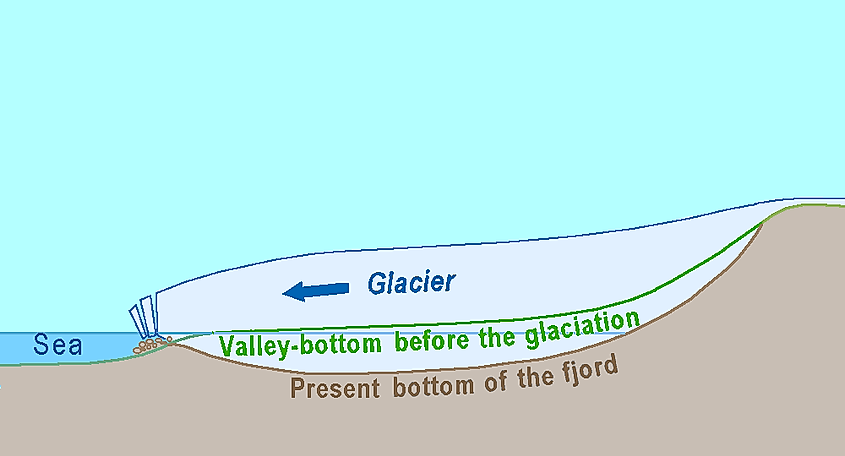
Fjords are primarily the product of glacial erosion, although some other factors, like geological heterogeneity and structural changes in the underlying bedrock, also contribute to the formation of fjords. It is believed that substantial, thick glaciers formed in pre-glacial valleys eroded the bottom of the valley by ice segregation and erosion of the adjoining bedrock far below the sea level. After these glaciers melted, the sea waters inundated these U-shaped valleys turning them into fjords. In front of the glacier’s arm is a deposition of a moraine of gravel and sand, forming an underwater barrier called ‘sea thresholds.’ This shallow threshold at the fjord’s mouth is why fjords are quieter than open sea. Fjords are relatively more profound in the upper and middle sections than the part facing the sea. This is due to the super erosive power and vigorous movement of the glaciers close to their sources. The relatively shallow thresholds of fjords result in the presence of hydrogen sulfide-rich stagnant waters at the bottom of the fjords.
Features And Variations Of Fjords
Some of the geological features and variations of fjords are discussed below:
Hydrology
It has been recorded that the fjords receive a large inflow of freshwater during the summer season. This freshwater then mixes with the saline water, creating brackish water, the surface of which is slightly higher than the ocean’s surface. As a result of this difference in surface elevations, the top layer of the brackish water flows into the ocean. Simultaneously, the bottom layer of saline water flows into the fjord. In the deeper portions of the fjord, the cold water from the winter is separated by the brackish top layer from the atmosphere. This deep water then mixes with the upper layer causing it to get warmer and freshen during the summer. However, in fjords with a shallow threshold, this deep water is not replaced annually, and hence low oxygen concentrations make it unsuitable for fish and other faunal species. In extreme cases, there is a continuous freshwater barrier on the surface; therefore, the fjord freezes over. As a result, the lack of oxygen throughout the fjord creates massive dead zones.
The fjords receive little freshwater inflow during the winter season. Therefore, at this time, the surface and deeper waters can mix more easily due to the steady cooling of the surface and wind. In deep fjords, some freshwater with less density than the saline water is found along the coasts. Offshore winds set up a current on a surface that transfers the dense saline water from the coasts into the deepest portions of the fjord.
Coral Reefs
In 2000, some researchers discovered coral reefs along the bottoms of the Norwegian fjords, extending from northern Norway to the south. The marine life found on these reefs is one of the crucial reasons why the coastline of Norway functions as a famous fishing ground. The reefs are believed to support thousands of marine lifeforms like fish, plankton, anemones, and many shark species. The fjords of New Zealand are home to many deep-water corals, and a dark freshwater surface layer allows these deep-water corals to grow in comparatively shallower waters.
Skerries
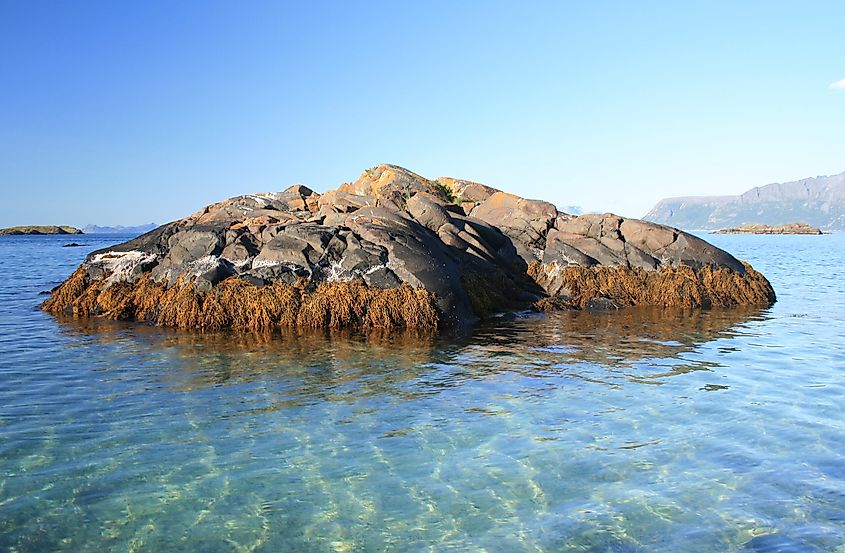
In some places, close to the seaward margins where fjords are found, the numerous and varied ice-scoured channels have divided the rocky coast into thousands of island blocks. Most of these island blocks are large and mountainous, whereas others are only rock reefs. These island blocks, called skerries, are primarily found at the outlet of fjords. Most of the Scandinavian coastline as well as the coastlines of the US States of Alaska and Washington, have skerries.
Phytoplankton
Fjords offer unique environmental conditions that are ideal for the growth of phytoplankton. In polar fjords, nutrients provided by the freshwater outflow greatly help in enhancing the growth of phytoplankton. For example, in the West Antarctic Peninsula's fjords, the meltwater nutrients drive diatom blooms that make these fjords a crucial feeding ground for various species. However, this abundance and growth of phytoplankton within fjords is highly seasonal, which varies with the water properties that depend on the glacial melt and sea ice formation as well as the availability of seasonal light.
Importance Of Fjords
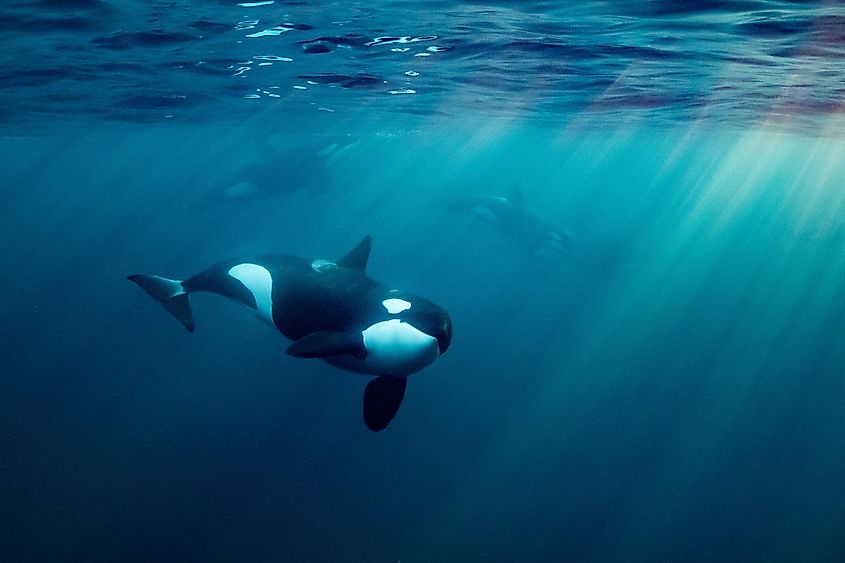
Fjords are geomorphological features that clearly represent the transition from terrestrial to marine environments. As such, fjords have the potential to conserve evidence of environmental changes that have taken place over the years. Fjords also serve as natural traps that preserve sediments that have been deposited over a period without any disruption. These fjord sediments are used by modern palaeoceanographic studies to know about the possible impacts of anthropogenic climate change.
However, the sheltered waters and easy access to fjords make them vulnerable to industries. Many recent studies have revealed that Arctic fjords on Canada’s east coast contain elevated levels of PCBs, mining effluents, and shipping wastes. Several anthropogenic pollutants have also been found in Norwegian fjords. Besides this, the catchment areas of Scottish fjords have been heavily deforested, resulting in increased runoffs and sedimentation rates.
As mentioned in the above discussion, these coastal geomorphological marine features are under tremendous pressure due to several anthropogenic activities like mining, shipping, and exploration of hydrocarbons; and climate change leading to warm water incursions, loss of glaciers and sea ice, and rise in sea levels. Therefore, in light of rapid climate change, careful monitoring and management of fjords and their pristine environments are the need of the hour to conserve them and avoid any long-term damage.











